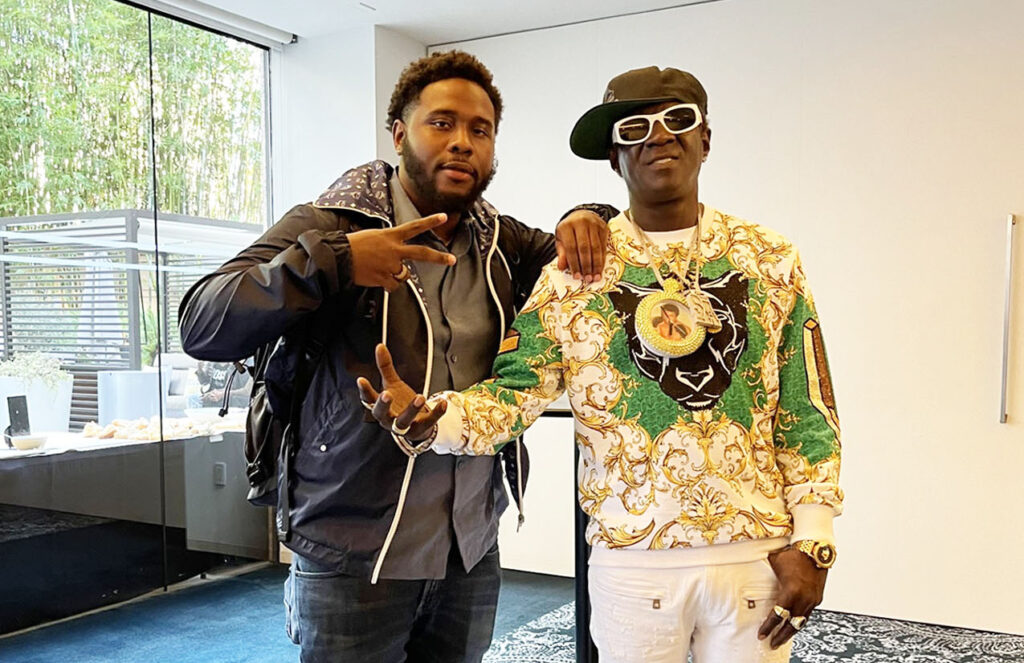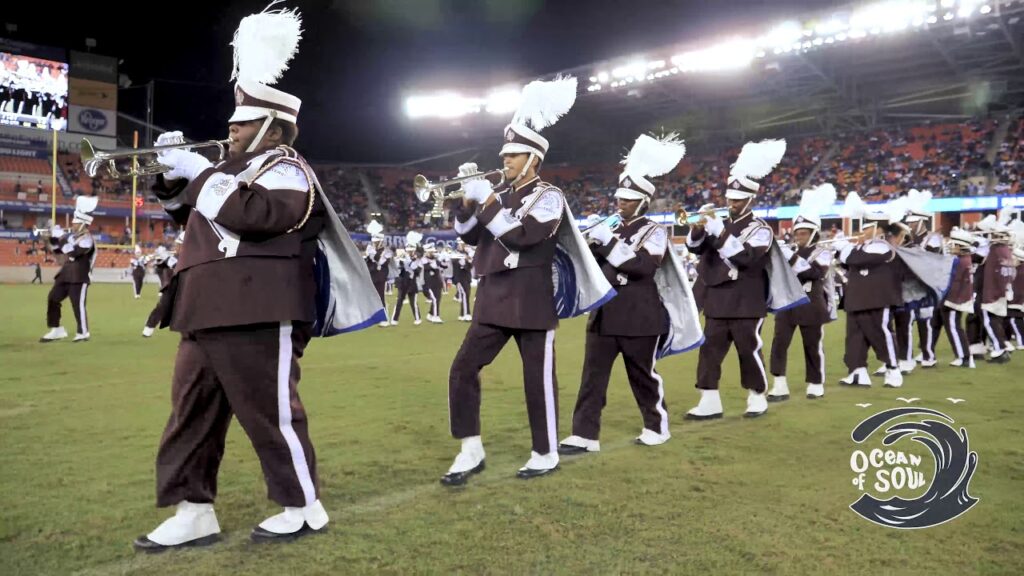Remembering a real-life Houston superhero: John Bland
Written by admin on February 21, 2021
By Chandrelle Lazard, Texas Southern University
:strip_exif(true):strip_icc(true):no_upscale(true):quality(65)/cloudfront-us-east-1.images.arcpublishing.com/gmg/6O4LMBMLRZGXRBWLPG5XSX2FYY.jpg)
In a time when our mobile devices, television and movie screens are filled with images of people with superhuman abilities performing heroic feats that change the world, it is easy to forget that there have been those who have walked among us every day, who have also done some amazing and heroic things to change the real world.
It is not often that one meets and recognizes such a person. However, I had the chance to meet a civil rights giant. He is a person who helped shape Houston’s future through selfless acts that can only be described as heroic in every sense of the word.
On March 4, 1960, Texas Southern University alumnus John Bland helped organize Houston’s first sit-in at the Weingarten’s grocery store lunch counter. The sit-in was nonviolent and consisted of more than a dozen TSU students. Just as many of our celebrated fictional superhero teams do, this group of amazing real-life heroes gave their collective a name that reflected their resolve for change and social justice. The students called themselves the Progressive Youth Association (PYA), and Bland was the secretary.https://25dbf16153f980f66fba5aa35b7644ef.safeframe.googlesyndication.com/safeframe/1-0-38/html/container.html
With an unassuming headquarters in the TSU library’s special collection department, Bland painted a vivid picture of the horrible realities that minorities faced living in the Deep South at the time. Once his words had etched a clear, but all-too-familiar image on a blood-stained canvas of pain and suffering, he set out to strategize with the PYA to extinguish the roaring and hellish flames of racial injustice.
He spoke of how buses were burning while describing the heat radiating from the smoldering frames as an unmistakable smell of chemicals in the paint turned to an ashen smoke that seemed to reach out from the flames towards the clouds above. He spoke of being spit on while trying to desegregate movie theaters, yet remaining calm and resolute. Again, as a young man of unyielding conviction, Bland yearned for change and began to orchestrate it with his fellow collegians.
Armed only with their want for a better tomorrow, the real-life superhero team known as the PYA decided to challenge the ugly head of Jim Crow (laws) — the villain in this story. They gathered at the flagpole in front of TSU’s Hannah Hall and began to call upon the strength of their ancestors, who once may have walked these same paths in chains, as they slowly began to march. With each step, the ground began to reverberate more and more as these brave youths walked over a mile from the flagpole on TSU’s campus to Weingarten’s lunch counter located at 4110 Almeda Roadand possibly their own demise at the hands of Jim Crow (laws).
:strip_exif(true):strip_icc(true):no_upscale(true):quality(65)/cloudfront-us-east-1.images.arcpublishing.com/gmg/POCTFWNEEFA7RATYHMHVKIMSEA.jpg)
Shielded by the invisible hands of their ancestors, the PYA occupied seats at the segregated lunch counter as they became available. The air in the storefront quickly filled with racial slurs that were hurled like cannon fodder. However, through their conviction and resolve, they endured. In fact, other sit-ins continued at other businesses, which acted as a call to action for many other Black supporters to follow suit.
Bland said preparation for the sit-in included mock training. The leader of PYA, Eldrewey Stearns, would contact the police before the protest for the group’s safety, he said.
Despite the safety precautions, Bland said his parents were threatened to be fired from their jobs for his involvement and had to use a different address. African Americans were targeted by those who oppose the sit-ins.
Bland had no regrets because of the powerful impact the sit-ins made in the community.https://25dbf16153f980f66fba5aa35b7644ef.safeframe.googlesyndication.com/safeframe/1-0-38/html/container.html
“From our movement we were able to promote black people into meaningful jobs and give them more respectability and responsibility,” Bland said.
The sit-ins were the domino effect that led to Houston’s desegregation, all thanks to the brave students of TSU.
Although Bland is proud of what they did 60 years ago, he said racism has not faded.
“It’s really bittersweet, you can see a lot of progress has been made, but you can also see that the old ugly head [of racism] is rising,” Bland said. “There’s a different type of discrimination and it’s more sophisticated.”
:strip_exif(true):strip_icc(true):no_upscale(true):quality(65)/cloudfront-us-east-1.images.arcpublishing.com/gmg/HY3TN2XQKNEINEYZXDYOEV2DFI.jpg)
The rising of modern-day racism lit a fire in today’s students identical to the 1960 pioneers.
Today’s students marched for justice for George Floyd, a former Third Ward resident who died when a white police officer in Minneapolis, Minnesota knelt on his neck for eight minutes and forty-six seconds.
The nation was outraged because the entire incident was videotaped by eyewitnesses.https://25dbf16153f980f66fba5aa35b7644ef.safeframe.googlesyndication.com/safeframe/1-0-38/html/container.html
I was numbed and couldn’t believe that this was my America. Like Mr. Bland, I felt I had to do something.
I joined many students in the protest for George Floyd, walking in the footsteps of Bland and others for justice. We marched and chanted, letting our voices echo in the streets of downtown Houston.
Our rally cries were not in vain. Congresswoman Sheila Jackson Lee introduced the George Floyd Law Enforcement Trust and Integrity Act to the House of Representatives. The act ensures the public that there will be police reform in communities across America.
Like the modern-day protests, Houston’s first sit-in encouraged national reform; the Civil Rights Act of 1964, prohibiting discrimination based on race, color, religion, sex, national origin, was created.
Unfortunately, the act of 1964 did not make discrimination disappear. Many have faced discrimination after this monumental civil rights law. Proving that the fight to extinguish the flames of inequality rages on. Until everyone, no matter the color of his or her skin, is treated fairly, the race continues.https://25dbf16153f980f66fba5aa35b7644ef.safeframe.googlesyndication.com/safeframe/1-0-38/html/container.html
Although Bland’s great race for justice came to an end on July 10, 2020, when he passed from COVID-19 complications, his courageous spirit lives on through Serbino Sandifer-Walker, a journalism professor at TSU who recreates the march the pioneering students did in 1960 with present-day students every semester.
“Their story touched my heart and soul and inspired me to organize a commemorative service on the 50th anniversary of that first sit-in. It took me nearly two years of planning,” said Sandifer-Walker.
A Texas Historical Marker stands at the location of that first sit-in on Almeda Road, thanks Sandifer-Walker.
:strip_exif(true):strip_icc(true):no_upscale(true):quality(65)/cloudfront-us-east-1.images.arcpublishing.com/gmg/VK7YVMD7LZAULITR57QXL277NE.jpg)
I am grateful to have met this superhero, and every day when I pass that marker at Almeda Road, I am reminded superheroes are real. Maybe, it is time for my generation to pick up the torch and reassemble a new team of superheroes to continue to fight for social justice. I will keep my eyes looking towards the sky as I walk down the Tiger Walk just in case a new John Bland rises.
“His legacy will always be remembered as fighting for justice and helping the underprivileged,” said Mrs. Betty Bland, Mr. Bland’s wife of more than 50 years.
■ This story was written to chronicle Houston’s Black history as part of a partnership between KTSU2, “The Voice”, and KPRC-TV, for Black History Month.
___________________________________________________________________________
About the author
:strip_exif(true):strip_icc(true):no_upscale(true):quality(65)/cloudfront-us-east-1.images.arcpublishing.com/gmg/BCDD2GHYXBHFLANUC7V3YZ4EPM.jpg)
Chandrelle Lazard is a journalism major who aspires to be a public relations practitioner. She graduates from Texas Southern University in May.






